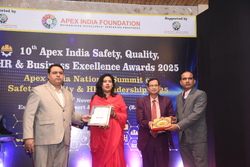The Three COP Presidencies (Troika) Came Together And Formed A Collective Leadership
This Dialogue formed part of the collective leadership of the Road Map to Mission 1.5

The Three COP (UN climate Conference) presidencies ,comprising the- United Arab Emirates (COP28), the Republic of Azerbaijan (COP29), and the Federative Republic of Brazil (COP30)- Troika, convened a high-level dialogue on “NDCs as Drivers for Long-Term Development Planning” at the 2025 Copenhagen Climate Ministerial. This Dialogue formed part of the collective leadership of the Road Map to Mission 1.5, launched through the outcome of the first Global Stocktake, which is cornerstone to the UAE Consensus.
Nationally Determined Contributions (NDCs) are climate action plans submitted by countries to UNFCCC secretariat every five years, outlining their commitments to reduce their emissions ( greenhouse gases). These plans are the core of the Paris Agreement and are designed to help achieve its long-term goals, including limiting global warming to well below 2°C and pursuing efforts to limit it to 1.5°C. NDCs are updated every five years.
According to the World Meteorological Organisation (WMO), 2024 was the hottest year on record, marking the first full calendar year in which the global average temperature exceeded 1.5°C above pre-industrial levels. The climate crisis is no longer a future risk but a present global emergency. The world faces a stark choice: disorder through inaction or progress through coordinated, inclusive, and ambitious action and implementation. The Dialogue underscored the importance of 2025 as a milestone year – marking ten years since the adoption of the Paris Agreement and halfway through this critical decade for climate action.
It represents the first year following the adoption of the New Collective Quantified Goal on climate finance (NCQG), also known as the Baku Finance Goal, which aims to mobilize at least USD 300 billion per year by 2035 for developing countries for climate action, with developed country Parties taking the lead. The COP29 finance decision further calls on all actors to work together to enable the scaling up of financing to developing country Parties for climate action from all public and private sources to at least USD 1.3 trillion per year by 2035.
This juncture must serve not only as a compliance checkpoint, but as a launchpad for institutional transformation and systemic alignment – ensuring that no one is left behind. We, the Troika of COP Presidencies, reaffirm the importance of building together an integrated and action oriented implementation cycle, and emphasize five key areas of convergence from the discussion held in Copenhagen: NDCs as Instruments of Implementation. NDCs must go beyond being political commitments – they must become actionable tools that align with national development plans, unlock climate finance, and generate innovation, resilience, and employment. This perspective aligns with the growing understanding, as presented by the new OECD-UNDP analysis, that ambitious climate action is economically sound and development-enhancing. Integrating the Paris Agreement Policy Cycle.
This year offers a unique opportunity to better connect the various pillars of the UNFCCC framework – NDCs, Biennial Transparency Reports (BTRs), and National Adaptation Plans (NAPs) – into a coherent climate policy architecture. This integrated approach can serve as an enabling framework for long-term development planning and whole-of-government, whole-of-society implementation, while respecting national circumstances and policy sequencing Institutional Strengthening and Implementation Capacity. Robust national institutions are essential to make NDC implementation effective. Strengthening institutional and technical capacities – particularly in developing countries – is foundational to delivering this next phase of the Paris Agreement. The incoming COP30 Presidency’s “Southern Cross” vision is proposed as a guiding framework for action across all five pillars of the Paris Agreement: mitigation, adaptation, finance, technology, and capacity-building. Alignment of Finance and Planning. In light of COP29’s finance outcomes, we emphasize the need for strategic alignment between enhanced financial flows and strengthened climate ambition.
When NDCs are embedded into national investment planning and linked to capital markets, they become more effective vehicles for mobilizing domestic and international resources – including climate finance, development finance, and private capital. Shared Vision for Structural Reform and Inclusion. There is a growing convergence around the need for systemic reform beyond the UNFCCC to accelerate the implementation of the Paris Agreement. This includes greater coherence in international financial governance and stronger integration of the best available science and climate action across institutions at all levels – from the local to the global. The Troika welcomes efforts such as COP30’s Global Mutirão against Climate Change, which calls for collective, self-determined contributions across regions and sectors.
The COP Presidencies Troika remains committed to working in close coordination to significantly enhance international cooperation and the international enabling environment to stimulate ambition in the next round of NDCs, with a view to enhancing action and implementation over this critical decade and keeping 1.5 C within reach. The success in this decisive decade will depend on our ability to move from ambition and negotiation to alignment and implementation, with means of implementation effectively integrated into the process.
The writer of this article is Dr. Seema Javed, an environmentalist & a communications professional in the field of climate and energy




